





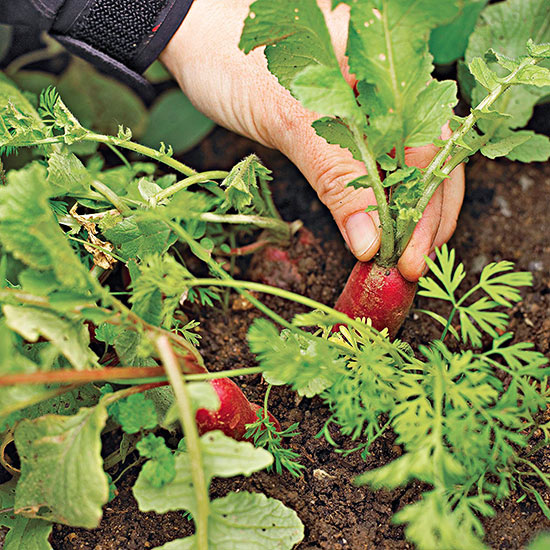
Fast-growing plants are ideal companion plantings with slow-growing plants. For example, plant cool-season veggies with longer-season, heat-loving vegetables to get the most benefit from the plot. This is called intercropping and gives you two crops from the same space. Sprinkle fast-germinating radish seeds amid slower-to-mature carrots. You can harvest the radishes while the carrots continue to grow. Another good intercropping pair: plant scallions around broccoli and cauliflower; harvest scallions before the broccoli or cauliflower grow big enough to shade them out.
When you sow seeds or plant seedlings, consider how long it takes before you can harvest them. For example, cool-season lettuces take between 45 and 55 days to maturity. You can harvest lettuces steadily until hot weather arrives, when the plants bolt (set seed) and are done for the season. Then fill the empty space with a hot-season crop, such as tomatoes or peppers.
Learn more about succession planting.
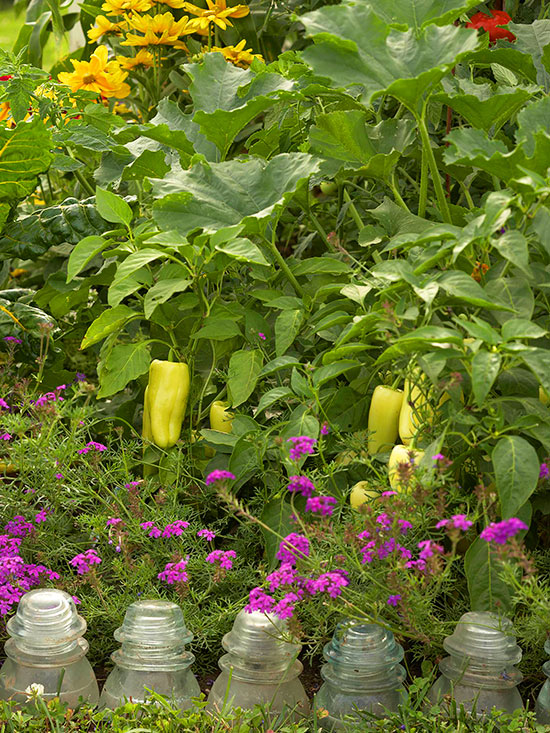
If you want a flower garden and a vegetable garden, why not combine them? Flowers and veggies make ideal companion plantings. Flowers add color to a vegetable garden and can shine once the vegetable crop is harvested.
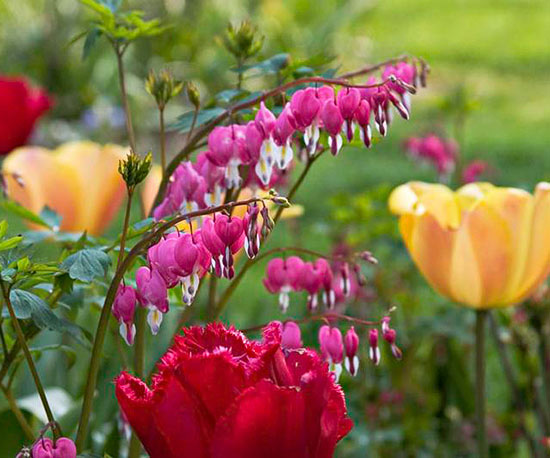
Capitalize on plants species' natural bloom times. For example, spring-flowering bulbs, such as tulips, daffodils, and crocus, look spectacular growing amid early-spring perennials, such as bleeding hearts, forget-me-nots, and Virginia bluebells. Combine spring bulbs and perennials (and summer bulbs and perennials, such as lilies and coneflowers) in the same beds and borders in order to enjoy the choreography of their blooms in the same season.
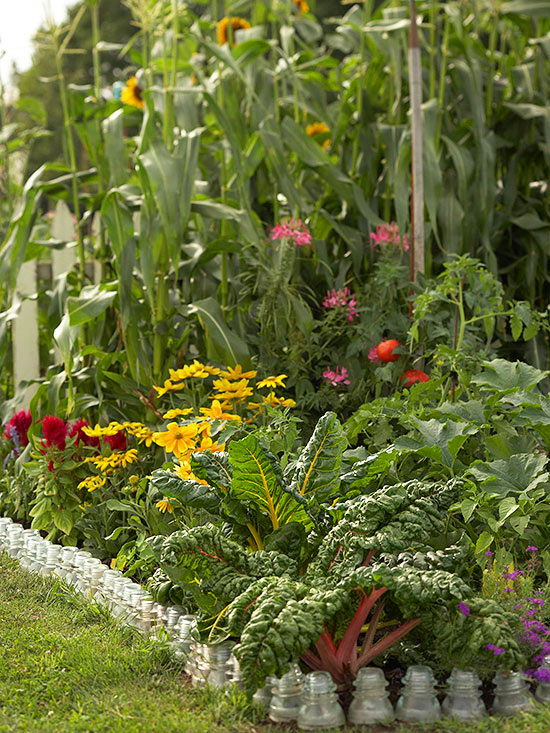
Enjoy the glories of all your flowers by growing the tallest plants in the back, midsize plants in the middle, and the shortest in front of a bed or border. Tall perennials include baptisia, buddleia, and hollyhocks. Midsize perennials include purple coneflower, black-eye Susan, and phlox. And low-growing perennials include sedum, dianthus, and catmint.
A plant pairing used by the North American Indians was corn, squash, and beans. Corn stalks gave climbing support for the beans, and the squash vines covered the ground as a living mulch to smother out weeds. Other creeper-leaper combos include vine crops, such as watermelons or muskmelons, that snake through rows of sweet corn. You also can add a trellis to the back of a bed so cucumbers and climbing beans can grow vertically, thus saving space.
Some plants, such as hybrid tea roses, are more beautiful on the top part of the plant—where they flaunt their blooms—than on the bottom part of the plant—where they expose their thorny stems. Pair frilly flowered dianthus or catmint with roses to cover up their less attractive legs.
A classic Mediterranean culinary duo, basil and tomatoes, also do well together in the same bed because they enjoy the same growing conditions: full sun, hot temps, well-draining soil, and a healthy dose of fertilizer. They are ready to harvest at the same time, too, for summer dishes, such as pastas, pizzas, salads, and frittatas.
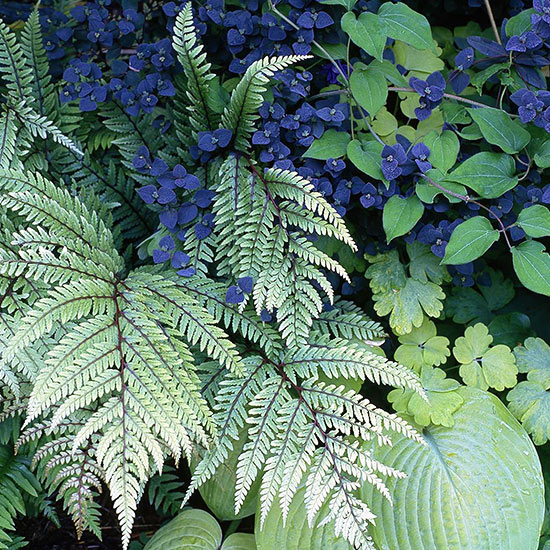
Add visual diversity in your shade garden by pairing different types of foliage plants. For example, the heart-shape, smooth leaves of hosta look lovely when combined with fern's textural and finely cut leaves.
See plants with remarkable foliage.
By planting many different species of plants in your garden, you increase your yard's wildlife interest. Plant diversity offers a healthier ecosystem for beneficial insects, birds, and butterflies. For example, mix nectar-producing flowers, such as monarda, buddleia, and trumpet vine, with larvae host plants, such as milkweed and parsley, to lure butterflies, such as monarchs and swallowtails.
Copyright © www.100flowers.win Botanic Garden All Rights Reserved